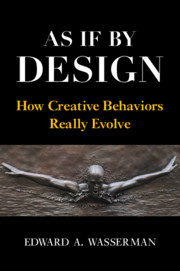Refine search
Actions for selected content:
6 results
14 - Taking Mental Floss to Dental Floss
- from Part III - Hygiene
-
- Book:
- As If By Design
- Published online:
- 01 July 2021
- Print publication:
- 22 July 2021, pp 152-161
-
- Chapter
- Export citation
13 - Florence Nightingale
- from Part III - Hygiene
-
- Book:
- As If By Design
- Published online:
- 01 July 2021
- Print publication:
- 22 July 2021, pp 133-151
-
- Chapter
- Export citation
18 - Moonwalking: And More Mundane Modes of Moving
- from Part IV - Arts, Entertainment, and Culture
-
- Book:
- As If By Design
- Published online:
- 01 July 2021
- Print publication:
- 22 July 2021, pp 199-211
-
- Chapter
- Export citation
10 - What’s in a (Drug) Name?
- from Part II - Medicine
-
- Book:
- As If By Design
- Published online:
- 01 July 2021
- Print publication:
- 22 July 2021, pp 106-111
-
- Chapter
- Export citation
9 - Eating to Live
- from Part II - Medicine
-
- Book:
- As If By Design
- Published online:
- 01 July 2021
- Print publication:
- 22 July 2021, pp 97-105
-
- Chapter
- Export citation

As If By Design
- How Creative Behaviors Really Evolve
-
- Published online:
- 01 July 2021
- Print publication:
- 22 July 2021
